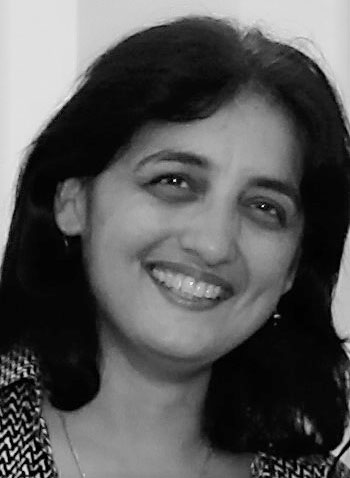CIRCL perspectives offer a window into the different worlds of various stakeholders in the cyberlearning community — what drives their work, what they need to be successful, and what they think the community should be doing. Share your perspective.
Sheena Vaidyanathan is the Computer Science Integration Specialist at the Los Altos School District in California.
How did you get started in Cyberlearning?
I am a computer scientist and have been involved in tech for many years. I was working at a tech startup in Silicon Valley and when the company was acquired, I had to make a decision to commute a long distance to join the other company or do something else in tech. I decided to do something different and take a break from tech. This was the perfect opportunity for me to pursue something I had always wanted to do – art. I decided to enroll in the local college to take art classes and also volunteer in the local schools to teach art. I found that I looked forward to the days I was in the classroom and I really loved teaching. So when a position for an art teacher opened up in one of the local schools, I applied and got in. When the art position went away, I was able to transition to teaching computer science since that is my background. I throw in art when possible into my computer science classes!
I continue to educate others, both students and educators, on CS because of my knowledge in this area. I love sharing my passion of CS with others and then seeing them understand it. There’s nothing like seeing the excitement of a student when they fix a bug and see their project run. Their curiosity and creativity motivate me to do more each day.
What would you like people to know about you?
Besides art and computer science, I love math. I count things wherever I go and see patterns in everything. I have a California teaching credential in math.
I wrote a book! The book is called Creative Coding in Python: 30+ Programming Projects in Art, Games, and More. It is unique in that it uses colorful illustrations and creative projects to explain programming concepts. It is definitely the most beautiful coding book I have ever seen and will be a fun way for anyone (at any age – not just kids) to discover the joy of coding. I explain concepts using simple everyday metaphors and short snippets of code, and give step by step instruction for fun projects like chatbots, and games along with flowcharts and pseudocode. There are also challenging extension activities. It is not dumbed down, I share challenging and complex topics in an accessible way. In my book, you will learn about everything from data types, GUI, function callbacks and more.
[Note: Sheena’s book will be a topic of a future CIRCL Educators book club]
What would you like policymakers to know about your work?
I have seen computer science (CS) go from being something in the fringes (had to explain it a lot 9 years back!) to something that is widely accepted. However, while we all have some idea of what CS is, or why CS is important, I worry that we are not taking the time to do deeper CS professional development and build more depth of knowledge in our teachers. This means that our programs are often very introductory, with no clear next steps, and it is possible that once the excitement dies down, we will find that we have not really reached all students in any meaningful way. My work in running Computer Science professional development with Krause Center of Innovation at Foothill college is to give teachers more knowledge in the subject including making them more confident coders, so they can in turn reach every student in their classrooms.
What should the cyberlearning community be doing?
I think it’s important to highlight and explain connections between computer science and everything else ( including the arts, math, and science) . As we look to deepen our CS knowledge for teachers,we should also show the interdisciplinary connections. For me, computer science should not be about learning to code; but about understanding a way to solve problems. . We should be creating opportunities for others to experience coding in this way to make it meaningful. I think art, math, and coding are beautifully connected, and they all bring out our creativity.
Seymour Papert is someone who I admired. He really understood how kids learn and was able to use the power of the computer to bring the joy of learning to our students
Related Resources
Computers for Creativity website, where Sheena shares resources and my articles.
Creative Coding in Python: 30+ Programming Projects in Art, Games, and More (Sheena’s book)


